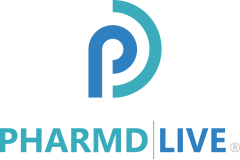
The landscape of CMS Transitional Care Management (TCM) billing and compliance updates for 2025 is at a pivotal juncture. New CPT code rules, expanded eligibility for Rural Health Clinics (RHCs) and Federally Qualified Health Centers (FQHCs), and a sharpened CMS focus on transparency and value-based care are raising the bar for providers nationwide. For healthcare executives, providers, and payers, mastering these requirements is not only essential for compliance but also for driving measurable improvements in patient outcomes and financial sustainability.
CMS TCM Billing and Compliance Updates 2025: What’s New and What Matters
Expanded Billing Access: RHCs and FQHCs
For the first time, RHCs and FQHCs can bill TCM services using standard CPT codes 99495 (moderate complexity) and 99496 (high complexity), unlocking new revenue streams and supporting underserved populations. This aligns with CMS’s push for greater transparency and accurate service documentation.
Updated CPT Codes and Reimbursement
- CPT 99495: Moderate complexity TCM, requiring patient contact within two business days post-discharge and a face-to-face visit within 14 days.
- CPT 99496: High complexity TCM, with the same contact requirement but a face-to-face visit within seven days.
- Only one TCM code may be billed per patient per 30-day post-discharge period.
Reimbursement rates for 2025 have been updated; please refer to the CMS Physician Fee Schedule for rates specific to your region.
Documentation: The Foundation of Compliance
CMS now expects bulletproof documentation for every TCM claim. Providers must record:
- Initial patient contact: Date, time, and method of post-discharge communication.
- Face-to-face visit: Date, time, and detailed clinical insights.
- Medication review: Comprehensive reconciliation, adjustments, and patient education.
- Care coordination: All interactions with specialists, community resources, and support services.
- Discharge summary: Diagnoses, treatment progression, and rationale for follow-up.
Proper documentation not only validates services for reimbursement but also shields organizations from costly audits and denials.
Trends and Best Practices: CMS TCM Billing and Compliance Updates 2025
Holistic Care Integration
CMS encourages the integration of behavioral health, social determinants, and technology-enabled care into TCM workflows. Patient-facing apps, telehealth, and AI-driven care coordination are now best practices, improving outcomes and patient satisfaction.
Focus on Access and Equity
Guidelines emphasize expanding TCM to rural and underserved communities, leveraging digital tools and care teams to bridge gaps in access and outcomes.
Continuous Education and Workflow Optimization
- Invest in EHR and telehealth platforms with TCM-specific templates.
- Standardize communication and scheduling to meet CMS timelines.
- Regularly review payer-specific TCM policies and participate in CMS training.
Key CPT Code Updates for 2025
| CPT Code | Face-to-Face Visit Timing | Complexity Level | Approx. 2025 National Avg. Reimbursement | Billing Limitations |
| 99495 | Within 14 days | Moderate complexity | $201.20 | Only one TCM code per discharge period allowed. |
| 99496 | Within 7 days | High complexity | $272.68 | Same as above. |
Source: CMS Physician Fee Schedule Search Tool 2025, CMS PFS Data File 2025
Only one TCM code allowed per patient per discharge period; all other services must be billed separately.
Compliance and Audit Risk Triggers
- Inadequate documentation of call logs, timing, and MDM rationale leads to claim denials.
- CMS scrutinizes for upcoding and mismatched codes—99496 demands justification for high complexity beyond timing alone.
- Only one practitioner (MD/NPP/PA) should bill per TCM service to avoid overlapping claims.
Emerging Trends Impacting TCM
- Value-Based Care Alignment: CMS supports integration of TCM into broader care management programs (like APCM and CCM), with enhanced incentives for performance-based models.
- Telehealth and RPM Synergy: Expansion of telehealth services and remote monitoring linked to TCM follow-up represents a growing compliance frontier.
- Care Coordination Code Realignment: The elimination of FQHC-era G0511 pushes organizations toward using distinct CCM/TCM CPT codes like 99490, 99439.
PharmD Live: Setting the Benchmark for TCM Compliance and Performance
PharmD Live positions providers at the forefront of CMS TCM billing and compliance updates for 2025 by delivering:
- Audit-Ready Documentation: Automated workflows ensure every required TCM element is captured, time-stamped, and easily auditable.
- Pharmacist-Led Medication Management: Board-certified pharmacists drive superior medication reconciliation and patient education, reducing readmissions and adverse events.
- Integrated Technology: Seamless EHR integration, real-time analytics, and telehealth capabilities streamline compliance and reporting.
- Proactive Compliance Updates: PharmD Live’s regulatory experts monitor CMS changes, updating workflows and templates so providers stay ahead effortlessly.
Action Plan for 2025: What Providers Must Do Now
- Review and update workflows to align with TCM call & visit windows.
- Train billing and clinical staff on CPT distinctions and documentation requirements.
- Audit past TCM claims (especially those denied or modified).
- Implement tools like PharmD Live for built-in MDM capture, reminders, and audit-ready compliance.
- Explore integration with CCM/APCM, unlocking additional value-based incentives.
Key Takeaway
2025 marks a turning point for CMS Transitional Care Management: heightened expectations, billing rigor, and integration with holistic patient care. Among all reviewed solutions, only PharmD Live combines pharmacist-led care, advanced technology, and full-spectrum CMS-aligned TCM workflows, delivering unmatched compliance confidence, measurable outcomes, and maximum reimbursement for providers in 2025.
Ready to Transform Your TCM Program?
Book a personalized TCM compliance assessment with PharmD Live today and unlock the gold standard in CMS billing, documentation, and patient outcomes.
References
- Centers for Medicare & Medicaid Services. Care Management Services in Rural Health Clinics (RHCs) and Federally Qualified Health Centers (FQHCs). CMS Updated 2025. Accessed June 24, 2025.
- Centers for Medicare & Medicaid Services. Medicare Physician Fee Schedule Search Tool. CMS Accessed June 24, 2025.
- American Medical Association. CPT® Professional Edition 2025. AMA 2025. Accessed June 24, 2025.
- PYA, P.C. Providing and Billing Medicare for TCM. PYA. Accessed June 24, 2025.
- PharmD Live. Transitional Care Management (TCM). https://www.pharmdlive.com/solutions/transitional-care-management/?utm_source=chatgpt.com. Accessed June 24, 2025.
- Newswire. CMS Rule Changes 2025. Newswire. Published May 2025. Accessed June 24, 2025.
- Centers for Medicare & Medicaid Services. Medicare Physician Fee Schedule Search.CMS. Accessed June 24, 2025.
- HCN Health. CPT® 2025 to Add Vaccine Codes, Overhaul Telemedicine Section. HCN HEALTH. Accessed June 24, 2025.
- Lu.ma. Navigating 2025 Telehealth and Care Management Updates. lu.ma. Accessed June 24, 2025.








